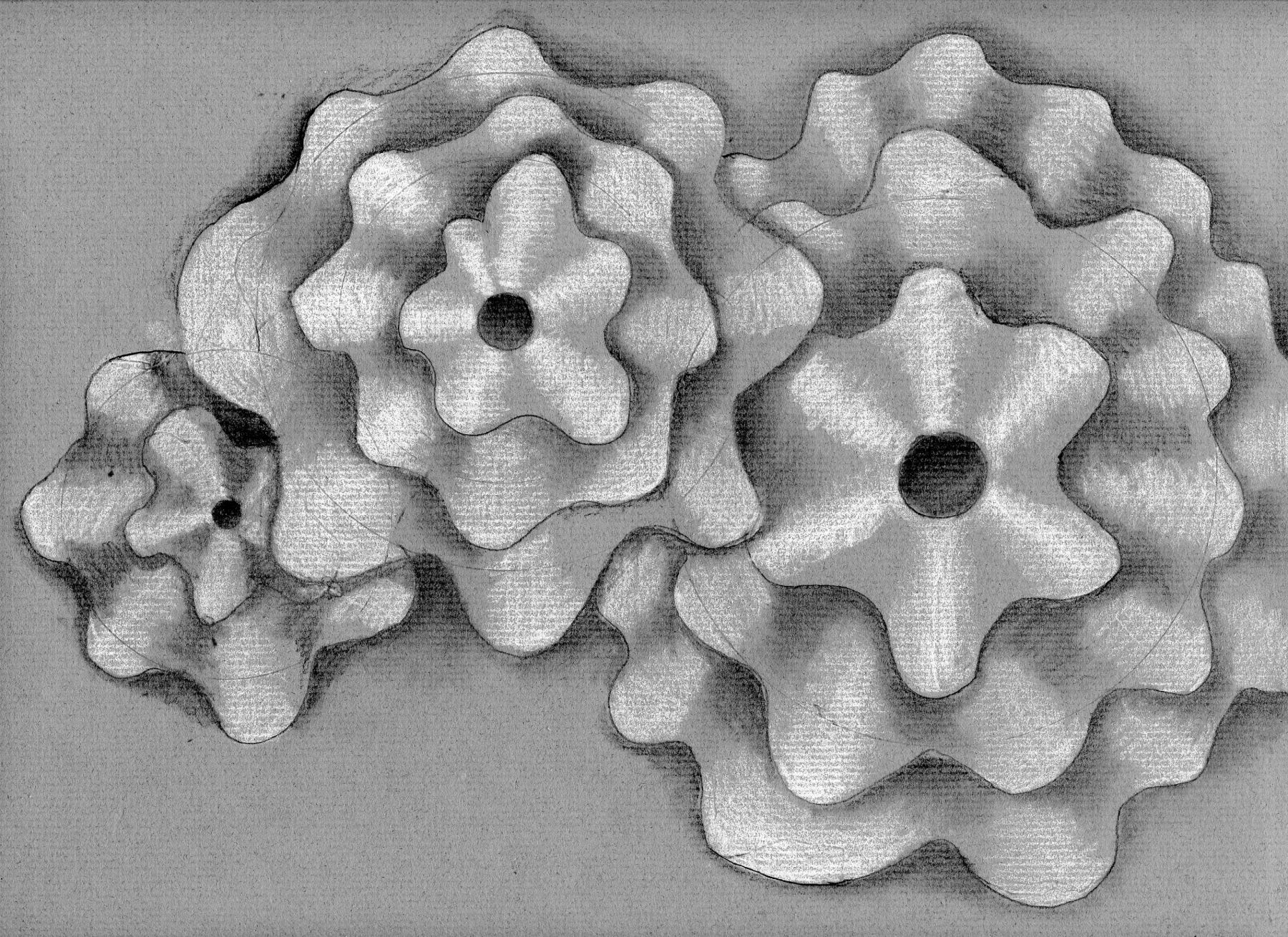Here is a little study of perhaps a timpani sound. Below are some notes from my journal talking to myself about how to work out various things in the visual musicality artworks.
Some journal notes this past week…
Oct 31, 2024
I need to figure out how to simplify the music paintings while maintaining the visual unfoldment that makes them musical. The time element, the transparency, the harmonics. More internal space. Fewer motifs mixed together. Minimal as much as possible. Not so tightly woven. Think about Miro.
I started thinking about color and the fact that I want luminescence and light but not brightness of hue except at rare moments. Hover around the gray zone. Gray down the colors or mix complementary colors together.
I spent some time looking through the racks and pulled out all of the older unfinished canvases that are music related. I’ll want to finish all of those up this winter and refresh my mind on those experiments. Maybe start planning out an exhibition.
I spent a couple of hours on ‘Composing Academy’ watching some videos on cinematic musical composition. I wanted to look at how a composer constructs an orchestral work. I guess everybody is using Cubase or some other similar software and sample libraries. Using these sound patches this can be thought of as collage with sounds.
Nov. 2, 2024
I woke up thinking that I need to think about structure but at the same time the asemic writing idea from the musicality point of view. From the spontaneous performance angle. But maybe build some structure in the first layer of the drawing. Hum, still thinking it out… Maybe determine the kind of gestures I am going to use first. But maybe not… I do need to figure out how to open the space more – not so dense.
One thing I wonder about with the multiple lines of activity in a large painting is the uniformity of the overall image or how to get crescendos and diminuendos – is this a shift is scale? - or think about minimal and maximal orchestration. Of course, it doesn’t have to be uniform, but it does need to be planned from a visual composition point of view I would think.
Like I have been thinking, I need to have pre planned a beginning, a middle and an end. Which means I need to have my palette worked out from the beginning which starts with the base surface treatment. But this has to be able to be manipulated by editing through the process. So, it seems the surfaces need to be a single color where the drawing can be edited by painting out things back to the base color. Maybe the final manipulation to the background surface has to wait to the end? That seems risky but so is the other way around. What gives me the maximum flexibility without getting bogged down?
I am trying to get to the point where everything is built in stages and when one is finished, I go to the next stage and don’t go backwards.
I want the final paintings to be complex but not overwhelming and open to endless expressive capacity where nothing ever happens twice even with repetition. But still, things need to maintain continuity as a body of work. I like the gestural approach. But I need to teach myself to keep things simple and as spatially open as possible.
I am thinking maybe I should mix up a warm grayish base color like a mixture of raw umber and #5 gray and maybe a bit of ochre.



